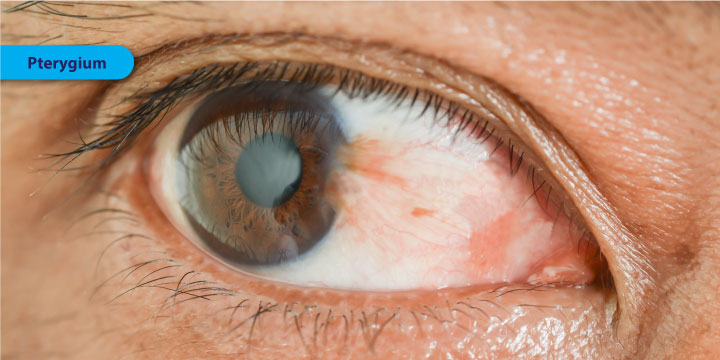Pterygium - Symptoms, Causes and Treatment
07-04-2024
What is Pterygium?
Pterygium is a common eye condition that involves the growth of a fleshy tissue on the conjunctiva, the thin membrane that covers the white part of the eye. This growth typically starts on the inner corner of the eye and may gradually extend towards the cornea, the clear outer layer of the eye. Pterygium can vary in size and appearance, ranging from a small, raised bump to a larger, wedge-shaped growth that may affect vision. It is important to have regular eye exams to monitor the growth of pterygium and ensure that it does not interfere with vision or cause discomfort.What Are The Causes Of Pterygium?
Pterygium is primarily caused by prolonged exposure to ultraviolet (UV) rays from the sun. Chronic irritation and inflammation of the conjunctiva, the thin, transparent layer of tissue that covers the white part of the eye, can lead to the development of a pterygium. Additionally, exposure to dust, wind, and other environmental factors can contribute to the growth of a pterygium. Over time, these factors can cause changes in the cells of the conjunctiva, leading to the formation of a pterygium.What Are The Risk Factors For Pterygium?
Risk factors for developing pterygium include spending extended periods of time outdoors in sunny or windy conditions, as exposure to UV light and irritants can increase the likelihood of developing this condition. Additionally, individuals who have a family history of pterygium may be at a higher risk of developing the condition themselves. People who work in professions that require them to spend a lot of time outdoors, such as farmers, fishermen, or construction workers, may also be more susceptible to developing pterygium. It is important for individuals who have these risk factors to take precautions to protect their eyes and reduce their risk of developing pterygium.What Are The Symptoms Of Pterygium?
Pterygium typically presents with symptoms such as redness, irritation, and a gritty sensation in the affected eye. Patients may also experience blurred vision, tearing, and a feeling of dryness in the eye. In some cases, the growth may cause a noticeable change in the appearance of the eye, such as a raised bump or a pinkish, fleshy growth on the white part of the eye. Individuals with pterygium may also have difficulty wearing contact lenses or may notice that their prescription eyeglasses no longer provide clear vision. If you are experiencing any of these symptoms, it is important to schedule an eye examination with an optometrist to determine the best course of treatment.How is Pterygium Diagnosed?
Pterygium is typically diagnosed through a comprehensive eye examination conducted by an optometrist. During this examination, the optometrist will carefully inspect the surface of the eye to look for any abnormal growths or tissue changes. In some cases, additional tests such as corneal mapping or imaging may be performed to further evaluate the presence and extent of the pterygium. A thorough evaluation by an optometrist is essential in accurately diagnosing and monitoring the condition.How is Pterygium Treated?
Pterygium can be treated through various methods depending on the severity of the condition. Mild cases may be managed with lubricating eye drops or ointments to relieve symptoms such as dryness and irritation. In more advanced cases, surgical removal of the pterygium may be necessary to prevent further growth and potential vision impairment. This procedure typically involves excising the abnormal tissue and possibly using a graft to cover the area. Other treatment options include using anti-inflammatory medications to reduce inflammation and scarring, as well as wearing sunglasses to protect the eyes from UV radiation which can exacerbate the condition. It is important to consult with an eye care professional to determine the most appropriate treatment plan for each individual case of pterygium.Is There A Cure For Pterygium?
There is currently no cure for Pterygium. However, there are various treatment options available to manage the symptoms and prevent the growth of the lesion. These may include lubricating eye drops, steroid eye drops, and surgical removal of the Pterygium if it is causing significant vision problems or discomfort. It is important to consult with an eye care professional for a personalized treatment plan tailored to your specific needs.How Can Pterygium Be Prevented?
Pterygium can be prevented by taking proper precautions to protect your eyes from harmful UV rays. This includes wearing sunglasses that provide UV protection, as well as hats or visors to shield your eyes from direct sunlight. It is also important to avoid prolonged exposure to dusty or sandy environments, as these particles can irritate the eyes and potentially lead to the development of pterygium. Additionally, staying hydrated and maintaining good eye hygiene can help prevent the condition from occurring. Regular eye exams with an optometrist can also help detect any early signs of pterygium and allow for prompt treatment if necessary.Regular eye exams with advanced technologies are essential for the early detection and treatment of pterygium. Schedule an eye exam with an optometrist today!
Schedule An Appointment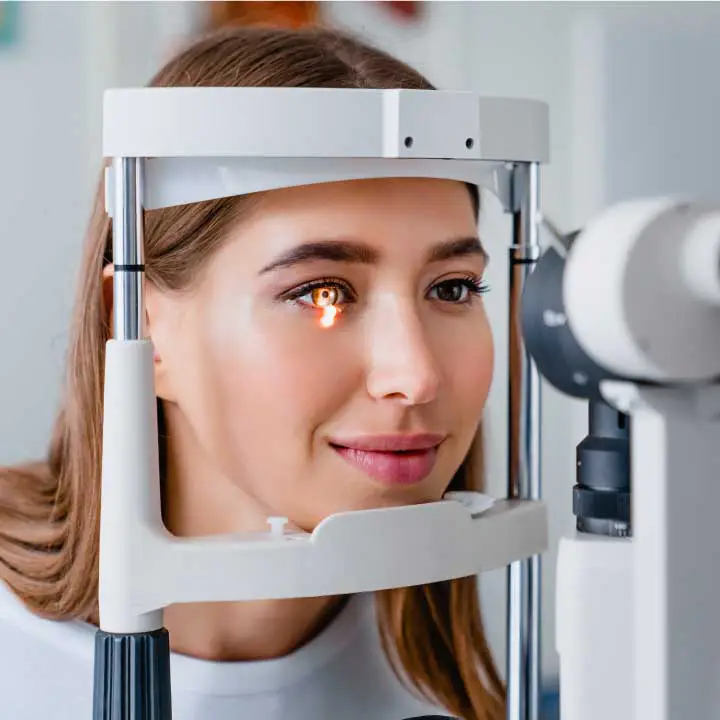
Adult Eye Exams
Our advanced eye exams consist of 25+ modern tests and digital scans to assess eye health, function, and visual acuity.

Child Eye Exams
Give your child a clear future with an annual eye exam from our experienced Edmonton optometrists.

Senior Eye Exams
Maintain your vision through your golden years with gold standard eye care from the optometrists at our Edmonton eye clinic.
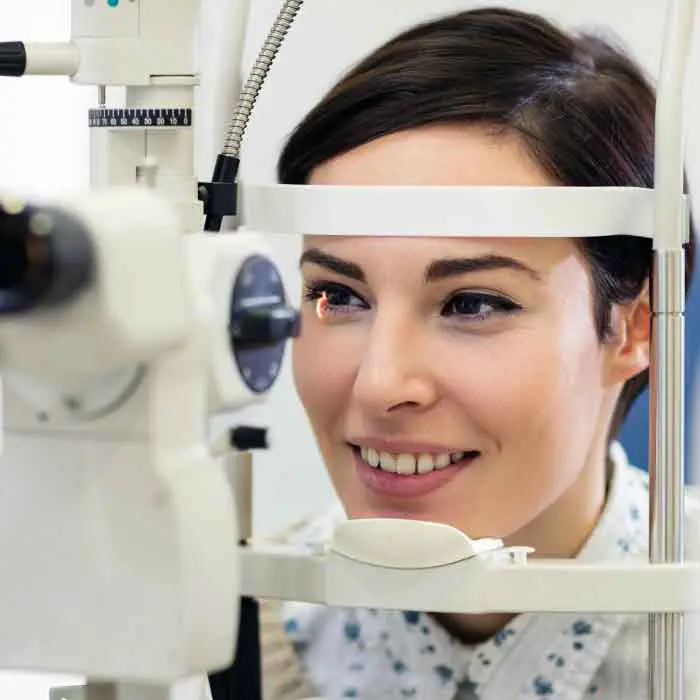
Contact Lens Eye Exams
Our eye exams for contact lens wearers include test and digital scans to assess eye health, function, visual acuity, and lens fit.
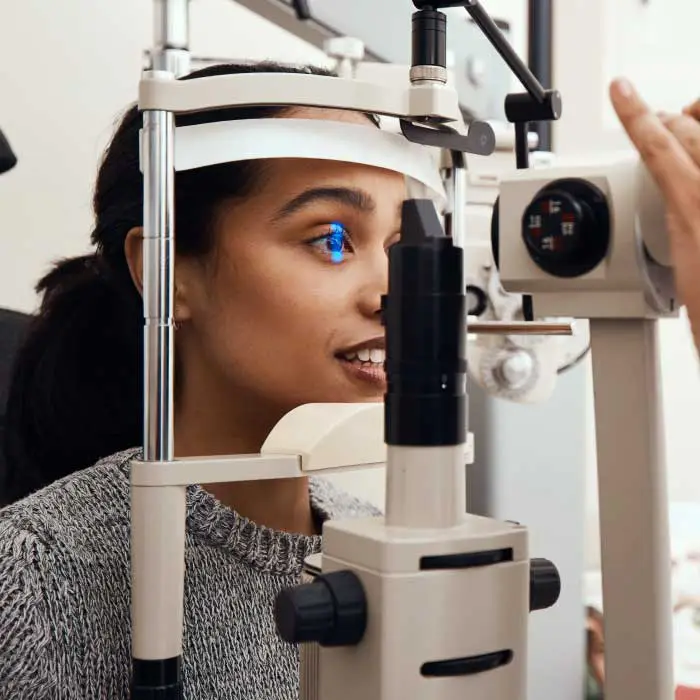
Diabetic Eye Exams
Managing diabetes requires regular eye exams to ensure that diabetes is not causing irreversible vision loss.
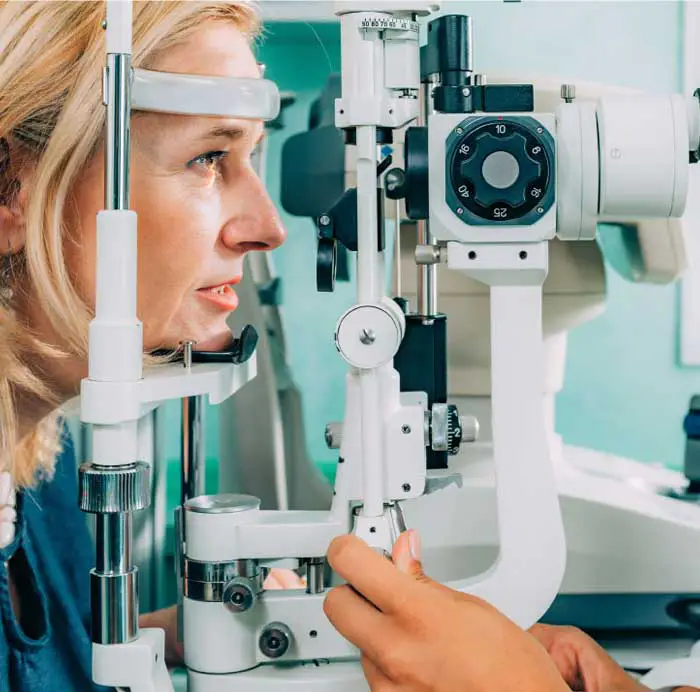
Dilated Eye Exams
Dilating the eyes enables our Edmonton optometrists to see more of the eye so that you many never see less.
Our Edmonton Eye Exams Are Comprised Of 4 Phases Of Evaluation
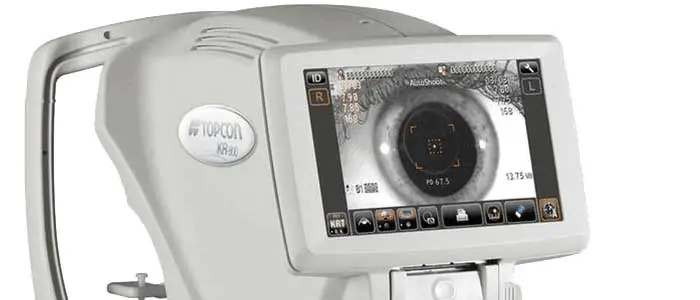
1. Eye Exam Pre-Testing
Corneal Thickness | Intraocular Pressures | Visual Field
Pre-testing is a detailed process that gathers all necessary information for the optometrist in advance of the optometrist-administered eye examination. This process involves completing a detailed patient history, as well as a series of standard tests. Pre-testing is an essential part of the comprehensive eye exam process, providing valuable information and visuals for both the optometrist and the patient.
More About Pre-Testing »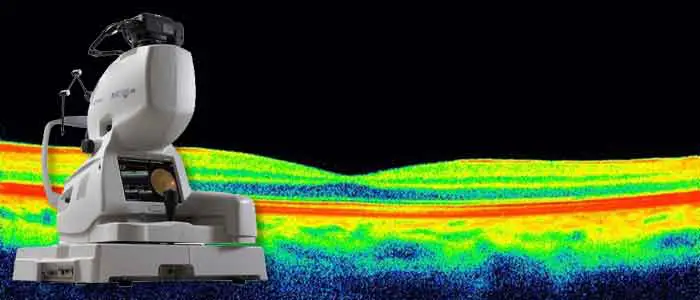
2. Advanced Diagnostic Testing
Retinal Photography, OCT, Topography
eye-deology Vision Care differentiates itself from other clinics by having the most advanced modern diagnostic specialty testing equipment. Specialty equipment, such as a wide-angle high-resolution retinal imager, Optical Coherence Tomography (OCT), Humphrey Visual Field Analyzer and corneal topographer, ensures that patients receive the best comprehensive eye care.
More About Advanced Testing »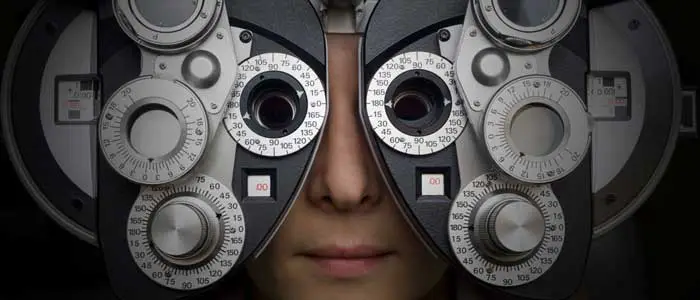
3. Optometrist Examination
Health Assessment & Disease Diagnosis
eye-deology Vision Care Edmonton optometrists perform a multitude of tests and assessments to evaluate ocular health, eye coordination, and visual acuity. In addition, they also evaluate the results of the tests and scans performed during pre-testing. As part of patient education, our optometrists also take the time to show and explain results to patients.
More About Doctor Exam »
4. Eye Glass Consult
Prescription | Lens Selection | Digital Fitting
If you require corrective lenses to improve your vision, our licensed opticians will customize their fit to your unique attributes, needs, lifestyle, and budget. Our opticians are happy to provide you with information about the latest eyeglass frame and lens technologies available so you can make informed decisions and begin seeing and looking your best.
More About Eyewear Consult »